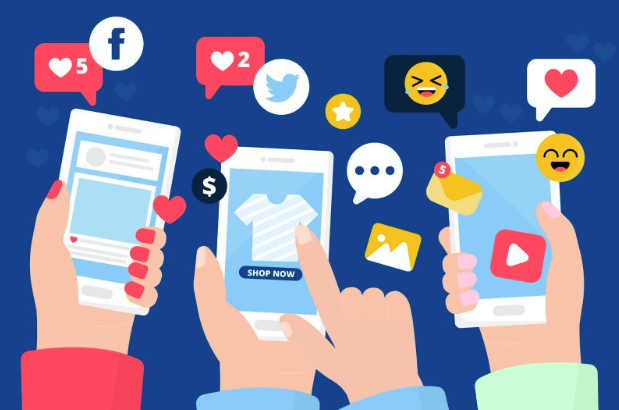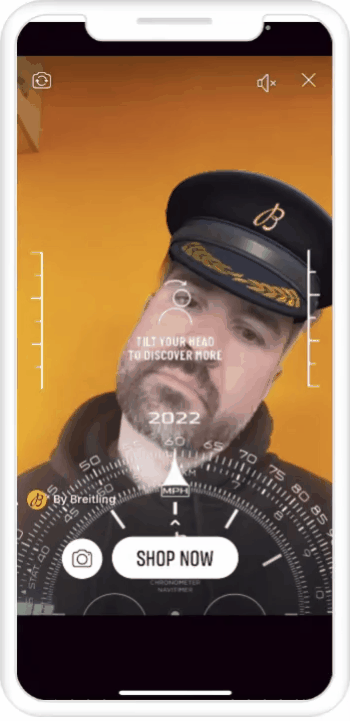It’s hard to imagine anyone not using social media today. Yet the industry continues to expand, with the global number of social media users climbing to almost 4.6 billion in 2022.
But not all social networks enjoyed equally strong years in 2022.
Facebook has plateaued since 2021, adding fewer than 50 million new users throughout 2023 (vs. 194 million in 2020). Meanwhile, half of Twitter’s top 100 advertisers appear to have fled the platform since its takeover by Elon Musk.
Conversely, TikTok continued to enjoy rapid growth and is expected to hit 955 million users by 2025. LinkedIn generated record ad revenues of $13.8 billion — six times higher than in 2017.
What does this tell us?
The social media landscape is constantly evolving, and what worked yesterday may not work today, let alone tomorrow. To get the most bang for your social media marketing buck, you need to keep up with the latest user behavior, functionality, and technology developments. We’ve rounded up five key social media trends for 2023 to help you do that.
1. The (Ongoing) Rise of Short-Form Vertical Video
Traditionally, viewers watch videos horizontally — think YouTube and Netflix.
But consumers are increasingly using smartphones to watch online videos, with almost two-thirds of YouTube viewing time stemming from mobile devices. Smartphone orientation lends itself to vertical video, so it’s no surprise that the overwhelming majority of mobile video consumption — 83% on video sites and 92% on all sites — happens in “portrait.”
At the same time, short-form video content has grown in popularity among consumers and marketers. It’s quicker to produce and requires less time commitment from viewers, prompting 39% of video marketers to agree that short-form videos generate the highest ROI and 47% to state that shorter videos are most likely to go viral.
In 2023, we expect more and more brands to combine these two trends by producing a more significant proportion of short-form, vertical video content.
Shorter videos are particularly effective for promoting products and services — a critical element of social media marketing for the corporate sector. According to Wyzowl, 73% of consumers prefer to learn about products or services via a short video, compared to:
- 11% would rather read text-based information
- 3% prefer to download a manual or ebook
- 3% favor attending an in-person pitch or webinar
- 3% want a demo or sales call
DTC bedding brand Brooklinen is aware of the power of short-form vertical video content, regularly using it to promote new and existing products. Since the company joined TikTok in mid-2021, its most successful post — garnering over 535,000 views to date — is this product video showcasing a new sheet color:
@brooklinen Taking our all new Classic and Luxe shade Soft Sage out for a spin ? Pictured here with our Classic Core Sheet Set in Cream #brooklinen #discoball #sagegreen #bestsheets ♬ Satellite speed audio – 1D Audioz
2.Smaller Social Teams Leveraging UGC Creators
User-generated content (UGC) has long been one of the most powerful tools in a social media marketer’s playbook. According to Tint:
- 72% of consumers find reviews and testimonials submitted by customers to be more credible than brands discussing their products
- 93% of marketers agree consumers trust UGC more than content created by brands
- 64% of consumers say that if a brand they like and follow regularly shares UGC, they’re more likely to share content about the brand or its products
We know what you’re thinking: UGC is hardly a new trend, so what’s it doing in this article?
It’s all about opening up user-generated content to more brands. UGC is typically defined as content created organically by a company’s customers or followers that the brand shares via its accounts. But few brands can rely on a constant stream of user-generated content, meaning larger companies have traditionally enjoyed the greatest benefits.
For that reason, a growing number of smaller brands are turning to “UGC creators” — social media users who create UGC-style content that’s paid for by the brand.
Social media marketing platform Later is one brand to capitalize on this tactic, paying freelance creators to produce UGC-inspired photos and videos for its social media accounts.
View this post on Instagram
This approach offers advantages to both brands and the creators themselves:
Brands with small social teams get to commission engaging content that looks user-generated.
Creators can get paid for their content without building up a large following. They don’t even need to show their faces in the content if they don’t want to.
3. Brands to Prioritize First-Party Data
This next point is less of a trend and more of a certainty.
If you pay attention to the latest marketing developments, you’ll know Google is phasing out the use of third-party cookies on its Chrome browser, following similar moves from Firefox and Safari.
This change is terrible news for marketers. Third-party cookies are the tools we rely on to track users around the internet, allowing us to serve personalized ads to our audiences based on their buying and browsing habits. Without them, brands will no longer be able to run much of the paid social media activity they rely on to drive sales and revenue.
However, it’s important to note that Google isn’t banning all cookies, just the third-party variety, which leverages cookie data placed by a third party. By their very nature, these cookies can feel invasive, and they aren’t always accurate.
Google’s planning to do away with these cookies from Q3 2024, so it stands to reason that marketers will turn their attention to first-party data in 2023. Because if you own the data, no one will stop you from using it in your marketing campaigns.
There are various ways to build up your first-party data, such as capturing customer email addresses in exchange for a discount code or a piece of exclusive content. But from a social media perspective, one of the most innovative approaches is to create a social media community so you can interact directly with your audience rather than relying on third parties to chase them around the web.
Electric cooker Instant Pot has built a Facebook Group for its audience to share recipes, troubleshoot problems, seek inspiration, and generally revel in the joy of cooking.
The group currently has 3.2 million members, giving Instant Pot a vast, captive audience to target with news about product launches, promotions, and more. All without leveraging a single cookie or paying a cent in ad dollars.
4. A Greater Focus On Platform-Specific Content
We get it: there are a lot of social platforms out there. Unless you have a large marketing team, it’s a lot of work to share social media content across those platforms, let alone create unique content for each.
Of course, most marketers know that different types of content play well on different platforms. Few brands will publish the same stuff on LinkedIn, Instagram, and Twitter because each has a diverse audience.
But where’s the harm in duplicating content across broadly similar platforms like Instagram and TikTok? After all, both are highly visual, and since the launch of Instagram Reels, both are focused on video content.
However, evidence suggests that while duplication saves time, it often fails to deliver the desired results. According to Hootsuite, marketers who create unique content for each network are significantly more confident about the value — and performance — of that content:
American Girl shows us how they tweak the same announcement for different platforms. The iconic toy brand unveiled its 2023 girl of the year with videos on Instagram Reels and TikTok.
View this post on Instagram
@americangirl Step into the spotlight with Kavi! ⭐️ #AmericanGirl #KaviSharma #StitchThis #Spotlight ♬ original sound – American Girl
It would have been easy for American Girl to post the same video on Insta and TikTok. Instead, it shot entirely new creatives for the two platforms, with the Instagram version coming across as more professional and polished and the TikTok video looking more rough and ready. That’s very much in keeping with the audience preferences of each platform.
5. Extended Reality Crosses Over to Mainstream
The use of augmented and virtual reality in social media marketing is nothing new. Brands have been experimenting with interactive lenses and filters for years. But with the technology becoming increasingly affordable, 2023 could be the year AR and VR cross into the mainstream, making them available to more than just a small clique of high-spending advertisers.
This shift is good news for social media marketers because there’s plenty of evidence to demonstrate the benefits of including interactive elements in social campaigns. Research from Magna Global found that interactivity boosts ad recall and brand familiarity, with three-quarters of viewers likely performing some action after seeing an interactive ad. Top actions include:
- Looking for a product (cited by 64% of respondents)
- Looking for deals (63%)
- Searching for more information online (59%)
Watchmaker Breitling was one brand to hop on the augmented reality train in 2022, leveraging the technology to create an interactive guide that told the story of its Navitimer wristwatch:
The campaign ran on Facebook and Instagram, with figures from Meta revealing the AR ads — combined with “regular” ad formats — achieved:
- 31% greater reach compared to usual ads alone
- 2.75X higher lift in consideration compared to normal ads alone
Featured image by Freepik.
Want to learn more about the latest tools, tactics, and trends in corporate social media marketing? Save your space at the #1 social media conference for senior-level marketing professionals.


 Image source
Image source Image source
Image source Image source
Image source Image source
Image source Image source
Image source






